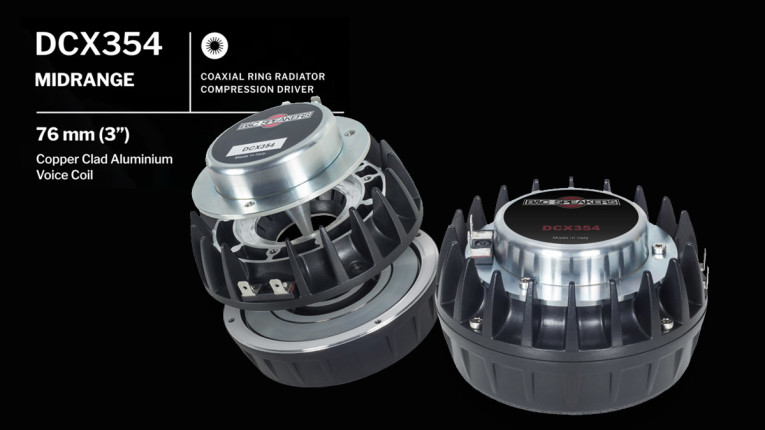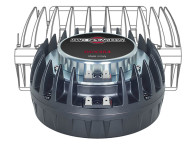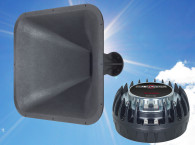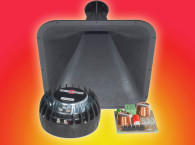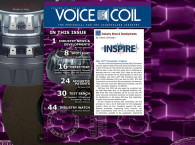
Delivering more output for demanding long-throw systems in less space, reaching a previously impossible mid-frequency extension, the new DCX354 time coherent coaxial ring radiator design from B&C Speakers features several patented and patent-pending innovations. The DCX354’s midrange diaphragm covers 400Hz – 6kHz with 112.7 dB sensitivity. The extended low-frequency bandwidth, is the result of a patent-pending diaphragm shape which progressively decouples the outer diameter as frequency rises.
The 76mm (3 inch) midrange voice coil handles 180 watts, while the 51mm (2 inch) voice coil high frequency diaphragm covers 5 – 20kHz with 111.6 dB sensitivity and handles 100 watts. A redesigned, patented midrange integrator allows both diaphragms to work in harmony over a wide bandwidth, for greater combined output and crossover flexibility. All this energy arrives at a 1.4" throat, from the most compact package that can be designed today.
In order to offer more than just a smaller version of an existing product, B&C Speakers wrote new mathematic modeling techniques from scratch - pioneering a method to evaluate dozens of potential diaphragm shapes in a day. Field experience and customer testing led to dozens of improvements and redesigns. Testing in unusual use cases and with compound loading, led to a more compact product with nearly the same output and durability as the original.
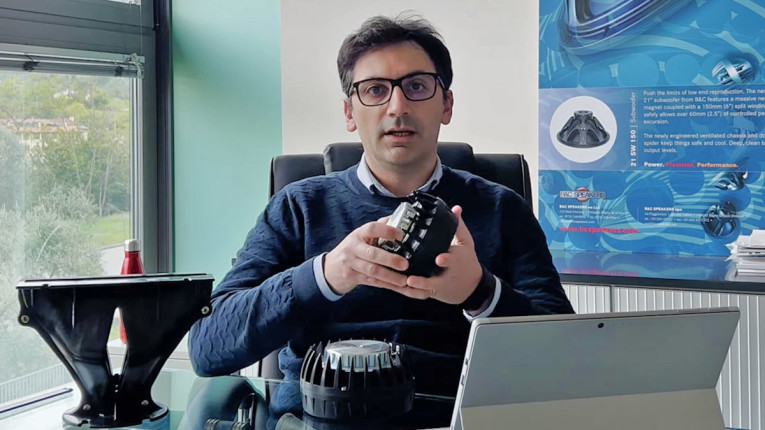
Reflecting the intense research work conducted on the DCX series during the last three years, and the experience gained on the development of the DCX464, B&C Speakers was able to develop this new compression coax with smaller dimensions but similar features. "The DCX354 was the result of a large team effort. We have spent many, many hours doing electromagnetic, mechanical and electroacoustical simulation in order to obtain the maximum performance from our loudest, widest-bandwidth compression driver yet. The diaphragm geometry is the result of both linear and non-linear simulations, working with a custom tool mixed with analytical models and numerical computation, strongly reducing the computational efforts compared with a pure FEM simulation," explains Andrea Casadei, the R&D Engineer responsible for the DCX coaxial program at B&C Speakers.
"The material used in both drivers' ring radiator diaphragms is a high-performance plastic polymer with high mechanical strength and thermal resistance. Thanks to the high Young's modulus of the material, we could design the mid to have a relatively large radiating surface, without mechanical modes within the frequency range. This helped us to lower the compression ratio, and the distortion, but still get a high output," Casadei adds.

"A lot of work was spent on the optimization of the impedance mismatch element that is needed to control and reduce acoustical resonances and cancellations between the paths. In a device like a compression coax it's important not to overload one of the two diaphragms. In order to do this the high-frequency unit should start working at relatively low frequencies. The acoustical path was then calculated to have an appropriate loading. So our unique idea was to include a decoupling device in the acoustical channel, positioned at the very limit of the mids segment. This mismatch element reduces the HF diaphragm reaching the mid diaphragm path, ideally working as a rigid wall from the HF perspective but without compromising too much the mids performance."
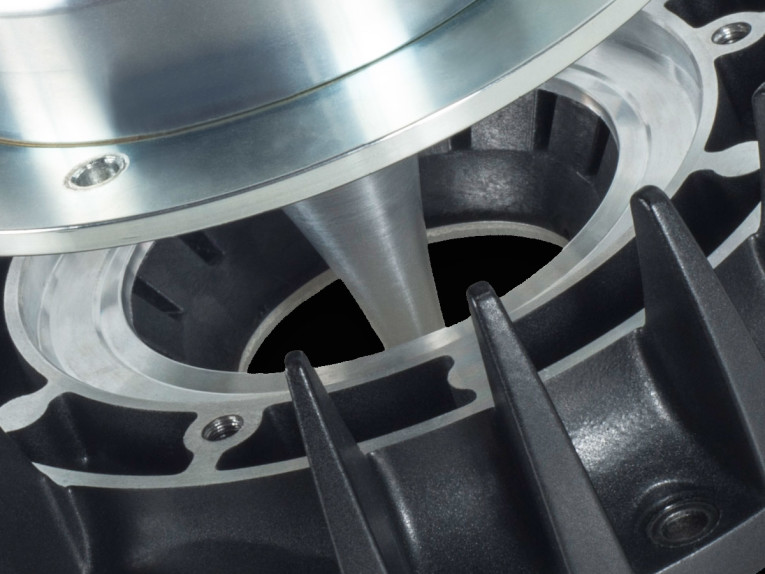
"We have also worked in the design of a specific waveguide for the DCX series. Compared to our previous waveguide, the new one has a lower cut-off frequency. The activity pattern is such that the horizontal dispersion is around 120 degrees, and very smooth on the vertical plane. This waveguide has a 1.4-inch throat so it can obviously be used with any compression drivers with this dimension."
The B&C Speakers DCX354 coaxial ring radiator is now available and can be ordered with the existing ME464 80x60 degree point-source horn, loading to 300Hz, and the new ME148 line-array waveguide for use to 500Hz. Also available is a dedicated FB354 passive crossover.
www.bcspeakers.com
